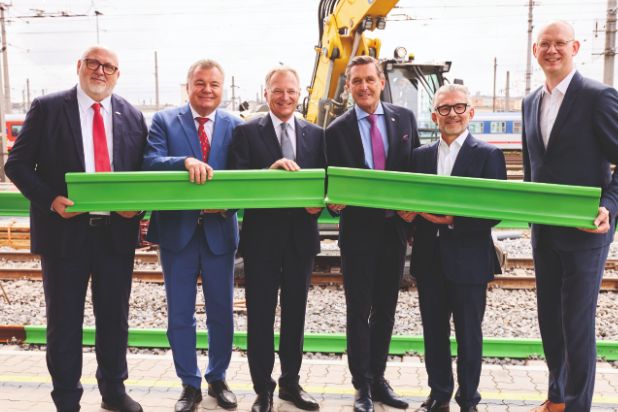Voestalpine produces world’s first hydrogen-based rail at Donawitz site
by David Fleschen

Austrian steel and technology group voestalpine has announced the successful production and installation of the world’s first rail manufactured using hydrogen-based direct reduction technology. The prototype was developed and processed entirely at the group’s Donawitz site in Styria as part of an ongoing pilot project, and the finished rail has now been laid at Linz Central Station.
The innovation marks a significant step forward in low-carbon steelmaking. The new rail is composed of scrap and hydrogen-reduced pure iron produced in the HYFOR pilot facility (Hydrogen-based Fine Ore Reduction), also located in Donawitz. The material was melted in the company’s in-house research steel plant TechMet, then shaped in the adjacent rail rolling mill. According to the company, the resulting product meets the same high standards of wear resistance and hardness that customers expect from voestalpine rails.
The company, which leads the global market in full railway infrastructure systems, sees this development as both a technological breakthrough and a proof of concept for industrial-scale green steel production. “The production of the world’s first hydrogen-reduced rail at our Donawitz site is a historic milestone,” said voestalpine CEO Herbert Eibensteiner, adding that greentec steel, the group’s decarbonization program, follows “a clear step-by-step plan to transform our steel production.”
As part of this roadmap, voestalpine plans to commission one electric arc furnace each at its Linz and Donawitz sites by 2027. The group’s long-term ambition is to reach net zero CO₂ emissions across its steel production by 2050. According to Eibensteiner, “achieving this goal requires research into multiple new processes and investment in pilot and demonstration projects that open up new paths in steelmaking.”
The hydrogen-based process used in Donawitz involves using hydrogen—ideally sourced from renewables—to reduce iron ore, replacing carbon-based methods such as blast furnace smelting. In contrast to conventional production, this method emits no carbon dioxide—only water vapor as a by-product.
For voestalpine’s Metal Engineering Division, which specializes in long products and mobility solutions, the achievement underscores its dual focus on technological leadership and sustainability. “Producing high-grade, CO₂-reduced steel qualities remains one of the greatest technological challenges in the transition to green steel production,” said Franz Kainersdorfer, head of the division and member of the voestalpine AG Management Board. “As a global leader in integrated railway infrastructure systems, we are committed to delivering sustainable, forward-looking solutions for the mobility of tomorrow.”
Source and Photo: Voestalpine

